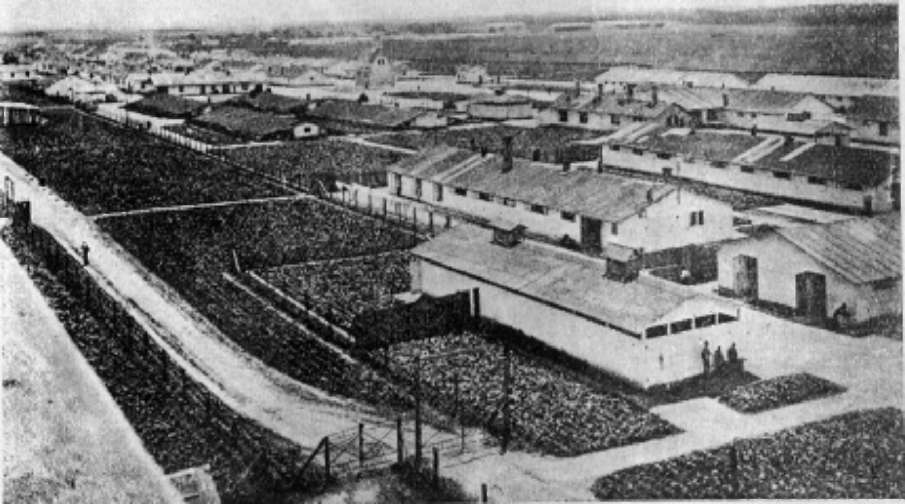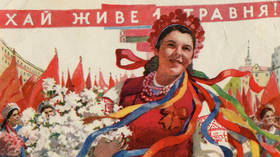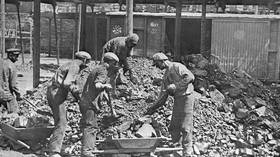PUTIN HISTORY LESSON
Ukraine's most nationalist region was once a hotbed of pro-Russian sentiment – how and why did it change?
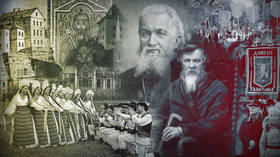
Today, Western Ukraine is considered to be the epicenter of Ukrainian nationalism. Walking around Lviv, right now, you'll barely hear a word of Russian spoken, and it would be shocking to encounter someone expressing sympathy with Moscow. However, it hasn’t always been like this. In the middle of the 19th century, the cultural heart of the region – Galicia – was considered more loyal to Saint Petersburg than almost anywhere else in Europe. The Galician elites were oriented towards Russia, and Russophilia was the most popular political trend among the local population.
So how did Galicia go from being a pro-Russian province on the outskirts of the Austrian Empire to the world’s capital of Russophobia?
Whence the Galician Lands Came to Be
“In the last decade of the 19th century, despite all its own difficulties in terms of national and economic life, Galicia became the center of the Ukrainian movement. In Russia’s Ukrainian lands, it played the role of a cultural arsenal with respect to Russia’s Ukrainian lands, where the means to bring about a cultural and socio-political revival of the Ukrainian people were created and improved,” Mikhail Grushevsky, a historian who was one of the first ideologists of Ukrainian nationalism, wrote in an article entitled Ukrainian Piedmont, back in 1906.
Today, it is difficult to dispute his assertions. During the 20th century, western Ukraine, which Galicia is part of, was the main center of Ukrainian identity and the engine driving Ukrainization in the rest of the country’s regions.
But the history of the Galician lands does not begin at the end of the 19th century. It has roots in the deep past, tracing back to the very origins of Russia.
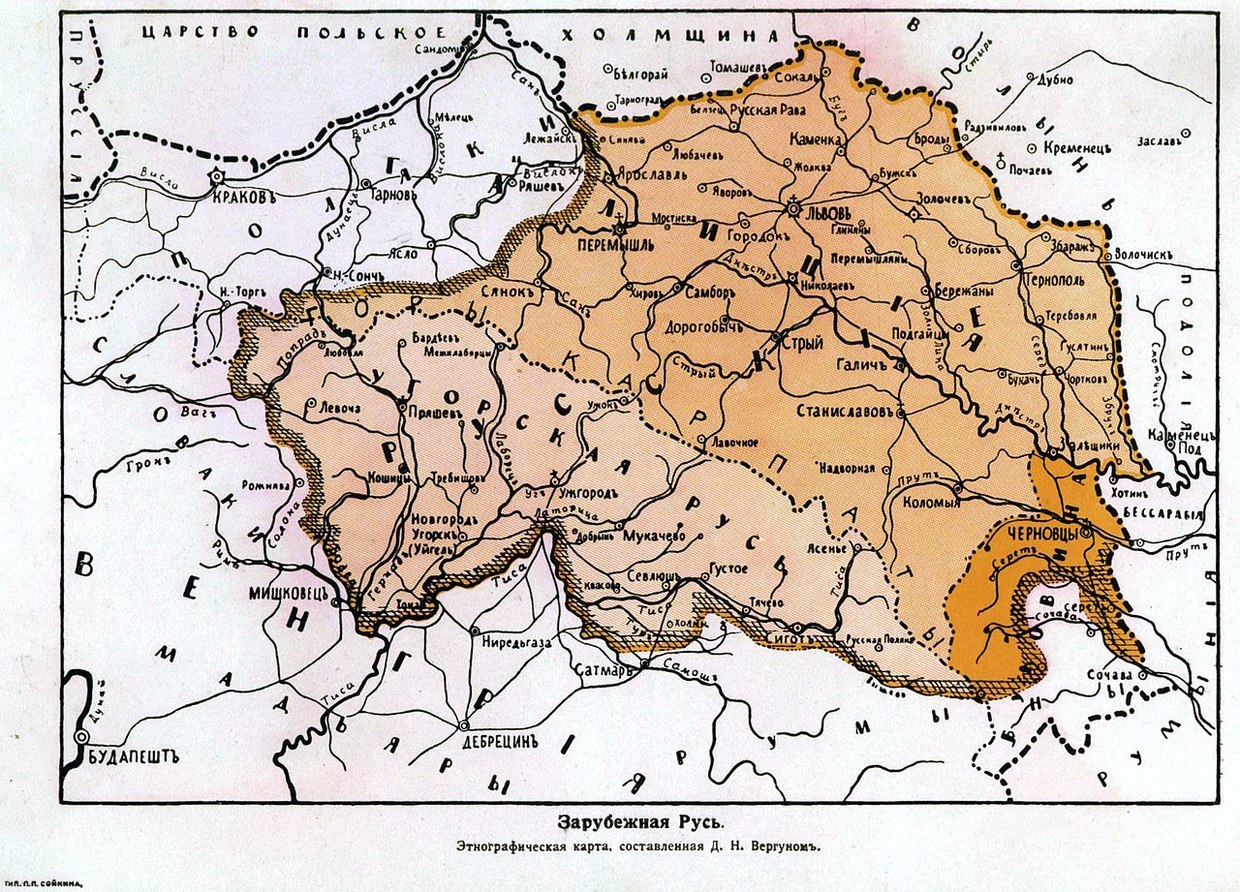
Initially, Galicia was part of the lands of Ancient Rus, which stretched from the southeastern cities of modern Poland to the Finnish lakes in the north. After the Mongol-Tatar invasion, most of the Russian principalities were weakened and the Galician-Volyn Principality was divided between Poland and Lithuania. At the same time, according to Polish sources, Galicia continued to be called Chervonoy Rus (that is, Red), and the local population called themselves Rusyns.
After the first partition of the Polish-Lithuanian Commonwealth in 1772, Galicia came under the rule of Austria. Vienna needed to build an administrative system for the region, most of which was inhabited by Slavs. To do this, the Austrian authorities skillfully played on the incongruities between the Catholic Polish population (mainly townspeople and nobles) and the Orthodox peasantry. Seeing the latter as possible agents of Russian influence, a campaign was launched to Polonize them.
The effect, however, turned out to be exactly the opposite. Galician Russophilism was born amidst the Polonization drive in the first half to the middle of the 19th century, when Poles played the dominant role in the cultural and social life of the region.
A Fifth Column
The local Rusyn population gave up hope of finding a way to integrate into the Austrian Empire without losing their traditions and culture, so they began to look for new meaning in the East. Moreover, in the period between the Congress of Vienna (1814-1815) and the Crimean War (1853-1856), Russia really was the hegemon of continental Europe. Austria itself called on Russian troops to help suppress a Hungarian uprising. For the Rusyns, the power of the neighboring empire was obvious, and they perceived Russia as a place where they could occupy a privileged position as part of the national majority, and not be second-class subjects.
The government in St. Petersburg quickly saw prospects in the nascent Russophile movement. Russian historians began to come to Galicia and pan-Slavic literature was distributed throughout the region. The most significant role in this was played by the historian and writer Mikhail Pogodin. During his trips to Galicia, he won over several prominent figures in the Rusyn intelligentsia, primarily the historian Denis Zubritsky, who eventually became an ardent supporter of pan-Slavism and Russian autocracy. Soon, a whole ‘Pogodin colony’ appeared in Lviv, which eventually joined Yakov Golovatsky, the first head of the Department of Russian Literature at Lviv University. The Russophile idea quickly won over the hearts and minds of Galician intellectuals.
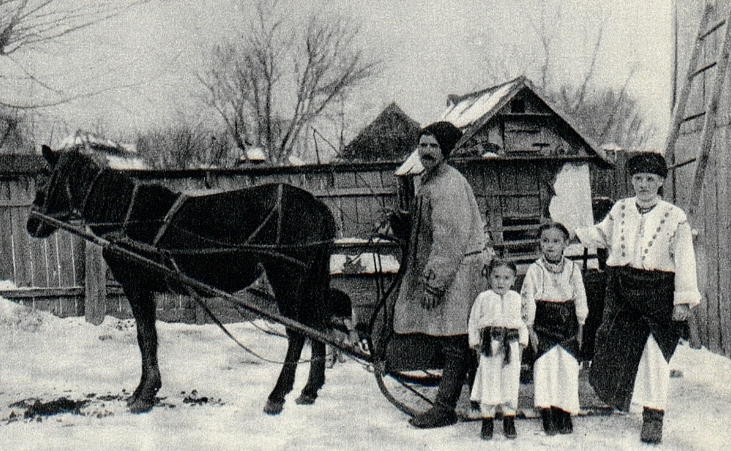
Of course, the growth of the pro-Russian movement provoked a response from the Austrian authorities. They decided to continue Polonization by replacing the Cyrillic alphabet in Russian schools with the Latin one. As a result, this ‘Alphabet War’ only strengthened the positions of Russophiles among the Russian intelligentsia. Moreover, the Austrian authorities continued to rely on the Catholic Polish nobility to manage the region, which further alienated the Rusyns from Vienna.
Meanwhile, the Russian Empire only increased its soft support for Russophiles through its embassy. Mikhail Rayevsky, who worked there as a priest, regularly provided money, textbooks, and copies of pan-Slavic pamphlets to Rusyn activists.
What the Rusyns Believed In
By 1866, the Russophile movement had finally formulated its platform. Its manifesto was an article entitled A Look into the Future, which was written by a Greek Catholic priest named Ivan Naumovich and published in the Lviv newspaper Slovo. Naumovich argued that Galicia could only be protected from Polonization by recognizing that the Rusyns’ identity belonged with the Russian Empire. “From an ethnographic, historical, linguistic, literary, and ritual point of view, Galician Rus, Ugric Rus, Kievan Rus, Moscow Rus, Tobolsk Rus – this is one and the same Rus. We did not become Rusyn in 1848, we are real Russians,” he wrote.
However, most Russophiles did not equate Rusyns and Russians at that time. Although they held up the Great Russian culture of the Russian Empire as a role model, they considered themselves to be a separate part of a common ‘Russian’ people. According to the historical view of the Galician Russophiles, the center of Russian statehood and culture shifted from Kiev to Moscow after the Mongol invasion, and due to historical circumstances, the Galician lands were torn away from the center of Russian life, and thus stagnated for a long time.
Faith and language were the pillars of the Russophile worldview. They were ardent adherents of the Eastern, Greek rite, and therefore advocated for purifying the Greek Catholic Church of Latinisms, and sometimes directly agitated for converting to Orthodoxy. In regards to language, Russophiles championed maintaining ties with the Church Slavonic language and preserving literary Russian without departing into local dialects. At the same time, despite the fact that Galician Russophiles focused on the Russian Empire in the cultural sphere, this did not manifest in the political sphere.
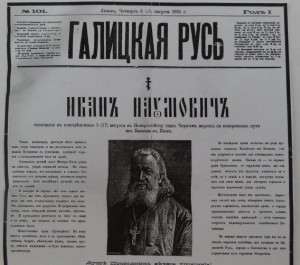
In general, the Russophile movement remained loyal to the Austrian authorities. In his article, Naumovich didn’t forget to add one important proviso – that the Galicians “have always been and will remain unshakably loyal to our august Austrian monarch and the most illustrious Habsburg dynasty.” From 1860 to 1880, Russophiles played a dominant role in Galicia’s non-Polish population. They controlled the region’s leading Rusyn institutions: the Stauropegion Institute, the People’s House in Lviv, and the Galician-Russian Matica. The Russian Rada, founded in 1870, became the political center of the movement. In 1874, Naumovich organized the Mikhail Kachkovsky Society, which was engaged in educating the “Russian people in Austria” and soon opened branches throughout Galicia.
The Birth of Ukrainism
The Russophiles soon had competition. The Austrian government realized the futility of trying to Polonize the Galician Rusyns and began to patronize the faction of their intelligentsia that called Rusyns Ukrainians and considered them a separate people, unconnected with Russians, whose future lay with Vienna, not Saint Petersburg.
The authorities actively patronized the ‘Narodovite’ movement that emerged among Ukrainian students and the progressive intelligentsia. Its proponents defended the idea that Galicia’s Rusyn population had its own national identity, holding that they were different from both Russians and Poles. Moreover, these Narodovites advocated for unity among the Ukrainians under both Austrian and Russian rule. In the future, they argued, this would allow them to be used in the foreign policy of the Viennese court in the same way the Russian Empire used the Russophiles of Galicia. However, despite the patronage of the Austrian authorities, Narodovite ideas did not gain traction among the Russian population for a long time.
The situation began to change with the deterioration of Russian-Austrian relations in the early 1880s. In Vienna, the perception finally emerged that Russophiles were a ‘fifth column’ engaged in pro-Russian propaganda on the Austrian empire’s lands. The first high-profile trial took place in 1882 after the population of the Galician village of Gnilichki converted from Greek Catholicism to Orthodoxy. The authorities held that this was the first step in preparing pro-Russian separatist demonstrations in Galicia. The authorities claimed that Russophile activists had been behind the conversion and put them on trial for treason. The defendants were Olga Grabar; her father Adolf Dobryansky, a leader of Transcarpathian Russophiles, who moved to Lviv in 1881; the aforementioned Naumovich; the editors of a number of pro-Russian newspapers; as well as other prominent figures of the movement.

In general, the case failed. The prosecution’s arguments did not convince the jury. Four of the accused received short prison sentences. Naumovich received the harshest punishment, sentenced to eight months. The rest, including Grabar and Dobryansky, were acquitted. However, adept coverage of the trial in the pro-government press allowed the Austrian authorities to score political points and undermine the Russophiles’ position in society. The media focused on the defendants’ connections with the Russian authorities, while the accused failed to speak convincingly at the trial. The leniency of the punishment appeared to be more connected with the liberal leanings of the local court than an actual absence of guilt.
However, it was not immediately possible to reduce the influence of Russophiles in Galicia, and they were a serious political force in the region for a long time.
The Russophiles were even able to pull the Narodovites into a joint confrontation with the Poles, despite the fact that both movements mercilessly criticized each other in the press. In 1883 and 1889, Russophiles and Narodovites conducted joint campaigns during the elections for the Galician Sejm. However, attempts to reach mutual understanding eventually failed due to clever manipulation by the authorities. In the 1890s, most of the Narodovites came to an agreement with the Poles through mediation by the Austrian government. The Ukrainians were promised concessions in the socio-political and cultural spheres in exchange for their refusal to cooperate with Russophiles. In 1891, phonetic spelling was officially introduced in local records and documents, which later formed the basis for the literary norms of the Ukrainian language.
A Sad Ending
Meanwhile, a split was brewing among Russophiles. The movement’s older generation spoke in favor of holding to the previous course, while the younger generation called for aligning with the Russian Empire not only culturally, but also politically. The new generation of Russophiles no longer saw the Rusyn of Galicia as just an ethnic group within the Russian people, but as an integral part of it. They also criticized the older generation’s loyalty to the Habsburg Empire, which was typical of the movement’s founding fathers. Their stated goal was to first achieve national and cultural unity among all three branches of the Russian people, and later bring about political unity with Russia.
At first, the conflict between the older and the younger generation took the form of internal discussions but did not lead to a rift in the movement. In 1900, the Russian People’s Party was created, whose leadership included both Russophiles loyal to Austria and those fully oriented towards Russia. Its platform contained a vague formula for national identity, which held that the Galician-Russian population was part of the “Little Russian Tribe, belonging to the triune of Russian people.”
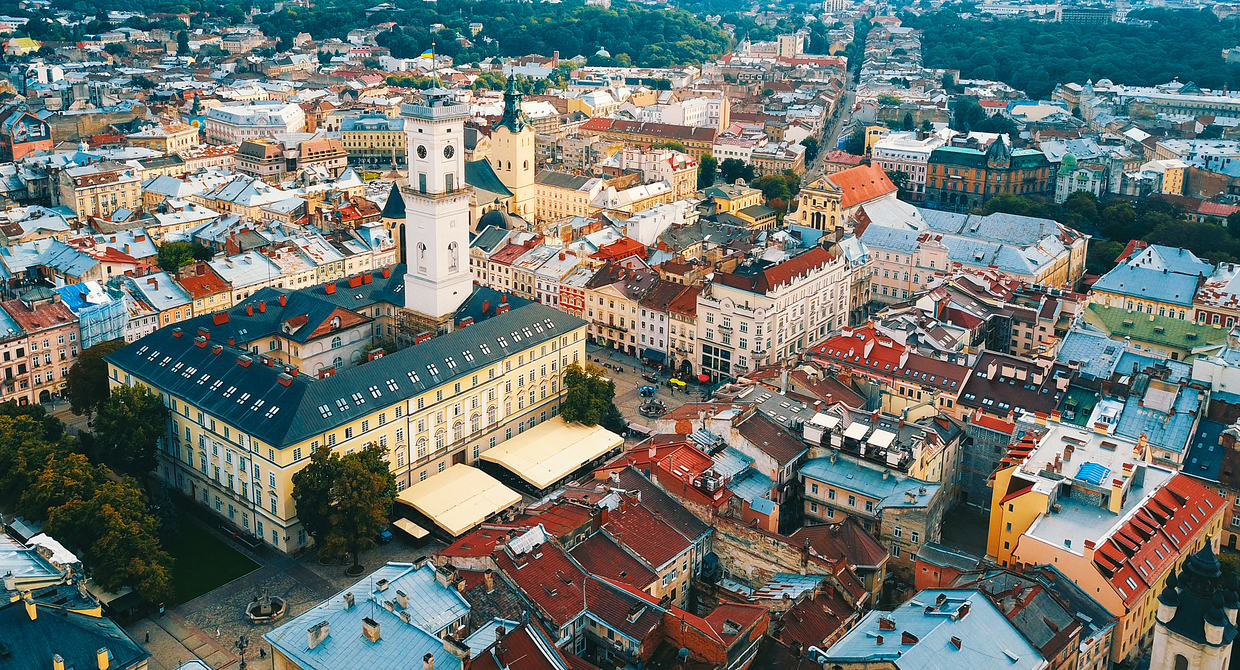
However, on October 14, 1908, Mikhail Korol, the leader of Russophiles loyal to Vienna, declared in the Galician Sejm that, despite the cultural unity of the all-Russian space, he also recognized the national identity of the Little Russians, and he himself had never been and never would be Russian. He also noted that he was “disgusted with people who served a foreign state for Russian rubles.” The new generation of Russophiles, led by Vladimir Dudykevich, in turn, affirmed “the national, tribal, and cultural unity of the Galician Rusyns with the Russians.” As to language, he held that the Ukrainian language “does not exist, has never existed, and will never exist, and there is only one Russian language created by the genius of the Russian people.
An organizational split in the Russophile movement occurred in February of 1909, when the Petersburg-oriented part of the movement took control of the leadership of the Russian People’s Party. Austrian loyalists responded by creating their own organization – the conservative Galician-Russian Rada. In fact, the pro-Russian position turned out to be much closer to that of the Galician population. The future minister of the West Ukrainian People’s Republic and an activist in the Galician Ukrainian movement Longin Tsegelsky wrote that after 1908, about 90 percent of the Russophile movement proved to be pro-Russian, with only ten percent loyal to the Habsburg authorities. Pro-Russian Russophiles were stronger in the cities, while pro-Austrian ones held sway in the countryside.
In the last years before the First World War, pro-Russian Russophiles carried out violent activities and their rhetoric towards the Ukrainian movement of Galicia became more derogatory. Their press wrote that “in order to please the Germans and Poles, ‘mazepintsy’ have created a Ukraine-bastardy in Russia,” and branded the Ukrainian language “artificial jargon created according to the recipe of Grushevsky.” This prompted the pro-Austrian-minded part of the Russophile movement to depart from their previous positions and make peace with the Ukrainian nationalists. Persecution by the Ukrainian authorities also began.
The final split took place during the First World War, when the Ukrainian movement was on the verge of a rapid rise. Meanwhile, the pro-Russian Rusyns, who had been expecting a long-awaited reunification with the rest of the Russian people since the beginning of the conflict, instead met with repressive measures from the Austrian government, which led not only to the destruction of the Galicia’s Russophile movement, but also the nearly complete disappearance of Galician Rusyns.
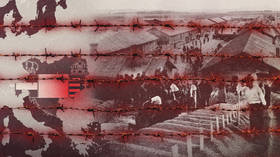
Galicia, a historical region in the West of Ukraine, is currently the center of the country’s nationalist movement. However, things were once very different. A little over a hundred years ago, representatives of opposing Russophile and pro-Ukrainian political movements competed for the loyalty of the local Ruthenian population, also known as Rusyns. Galicia’s Russophiles welcomed the beginning of the First World War as a step toward an anticipated reunion with Russia. However the Ukrainian movement remained loyal to Austria-Hungary. With the help of the latter, Vienna killed off the Rusyn intelligentsia, which it considered a “fifth column”. To accomplish this, the Hapsburgs set up concentration camps.
What happened next amounted to a genocide.
The beginning of the tragedy
By the start of the First World War, the Russophile movement in Galicia was experiencing tough times. As a result of the “divide and rule” policy implemented by the Austrians, the movement suffered a split. The oldest and most respected organizations ended up in the hands of pro-Austrian leaders who advocated Ukrainian, not Rusyn, identity.
After the army of the Russian Empire crossed the border on August 18, 1914, and launched an offensive in Galicia, mass repressions swept through the region. People fell victim to the rage of the Austrian authorities over trifling matters – like possessing Russian literature, being a member of a Russian society, having a Russian education, or just sympathizing with Saint Petersburg. In some cases, people were arrested just for calling themselves Russians. Prisons were full of “enemies of the state” and “dangerous Moscow agents”, and the streets were lined with gallows.
“Those suspected of ‘Russophilia’ were hung on these trees in front of the windows. People were hung right on the trees. They would hang there for a day, then would be taken off and others would take their place… ” recounted one of the peasants in the Gorodetsky district. The repressions primarily affected the intelligentsia and Orthodox priests, most of whom completed spiritual studies in the Russian Empire.
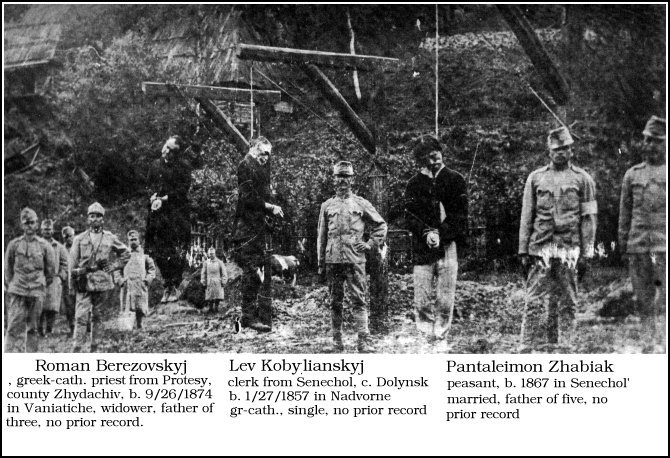
Repressions against the intelligentsia were followed by those against the general public. Anyone who was thought to sympathize with Russia or Russian culture became a suspect. This included people who had once visited Russia, read Russian newspapers, or were just known as “Russophiles.” Military courts worked around the clock and a simplified procedure of legal proceedings was introduced for cases of suspected treason.
Members of Galicia’s Rusyn movement who chose the “Ukrainian way” actively participated in the repressions. Pro-Austrian politicians prepared lists of “unreliable” suspects and based on mere accusations, and arrested anyone who sympathized with Russia. As Russophile public figure Ilya Terekh described, “At the beginning of the war, the Austrian authorities arrested almost the entire Russian intelligentsia of Galicia and thousands of peasants, based on the lists handed over to the administrative and military authorities by the Ukrainophiles.”
“People who recognized themselves as Russian or simply had a Russian name were seized indiscriminately.
Anyone who possessed a Russian newspaper, book, sacred image, or even a postcard from Russia was grabbed, abused, and taken away. And then, there were gallows and executions without end – thousands of innocent victims, seas of martyr blood and orphan tears,” said another Russophile, Julian Yavorsky.
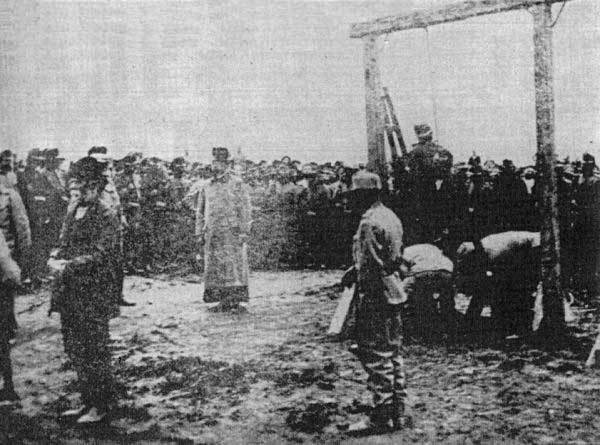
In October 1914, the Russian writer Mikhail Prishvin, who served as a medical assistant at the front, wrote in his diary: “When I got to Galicia ... I felt and saw the living images of the times of the Inquisition.” Prishvin described the feelings of the Galician Rusyns toward Russia as follows: “Galicians dream of a great, pure, and beautiful Russia. A seventeen-year-old schoolboy walked with me around Lvov [now Lviv, then Lemberg] and spoke Russian without an accent. He told me about the persecution of the Russian language. Students were not even allowed to have a map of Russia, and before the war he was forced to burn books by Pushkin, Lermontov, Tolstoy, and Dostoevsky.”
Hell on earth
The prisons of Galicia were not big enough to accommodate all the repressed. On August 28, 1914, there were two thousand prisoners in Lviv alone. It was then that the Austrian authorities decided to establish concentration camps. In September 1914, the huge Thalerhof place of incarceration was set up in Styria. The first prisoners were delivered on September 4. According to the testimony of one of the survivors, priest Theodor Merena, prisoners were “people of different class and age”. They included clergy, lawyers, doctors, teachers, officials, peasants, writers, and students. The age of the prisoners ranged from infants to 100-year-olds.
Occasionally, Ukrainian activists who were loyal to the Austrian regime were accidentally placed into Thalerhof. Most of them were removed quickly. One later recalled that all prisoners had a chance to escape by giving up their Russian name and registering as “Ukrainians” in the “Ukrainian list.”
Up to the winter of 1915, there were no barracks in Thalerhof. People slept on the ground in the open air despite the rain and frost. The camp’s sanitary conditions were awful. The latrines were uncovered and used by twenty people at a time. When the barracks were built, they were overcrowded, housing 500 people instead of the intended 200. The prisoners slept on straw beds which were rarely replaced. Naturally, epidemics were widespread. In just two months following November 1914, over three thousand prisoners died of typhus.
“In Thalerhof, death rarely came naturally – it was injected through the poison of infectious diseases. Violent death was commonplace in Thalerhof.
There was no question of any treatment of the sick. Even doctors were hostile toward the prisoners,” wrote imprisoned Rusyn writer Vasily Vavrik.
The prisoners weren’t provided with any adequate medical care. In the beginning, Thalerhof didn’t even have a hospital. People died on the damp ground. However, when the hospital barracks were finally built, the doctors gave almost no medicine to the patients.
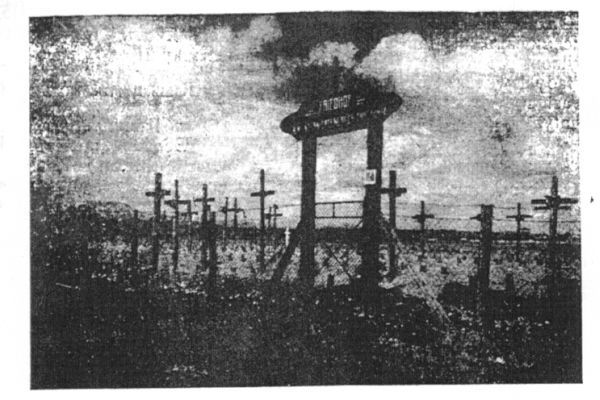
To instill fear, prison authorities constructed poles throughout the camp and regularly hung “violators” on these poles. The violation could be a mere trifle, like catching someone smoking in the barrack at night. Iron shackles were also used as punishment, even on women. Moreover, the camp was supplied with barbed wire, observation towers with sentries, barking dogs, posters with slogans, propaganda, torture facilities, a moat for executions, gallows, and a cemetery.
The camp operated for nearly three years and was closed down in May 1917 on the order of Charles I of Austria. The barracks stood on the site until 1936, when they were finally demolished. 1,767 corpses were then exhumed and reburied in a common grave in the nearby village of Feldkirchen.
The exact number of victims in Thalerhof is still disputed. The official report by Field Marshal Schleer dated November 9, 1914, stated that 5,700 Russophiles were imprisoned there at the time. According to one of the survivors, in the autumn of the same year there were about 8,000 prisoners. Twenty to thirty thousand Russian Galicians and Bukovinians passed through Thalerhof in total. In the first year and a half alone, about 3,000 prisoners died. According to other sources, 3,800 people were executed in the first half of 1915. Overall, in the course of the First World War, the Austro-Hungarian authorities killed at least 60,000 Rusyns.
Remembering the forgotten
In the period between the two world wars, the former prisoners strived to preserve the memory of the tragedy that affected Galicia’s Ruthenians and to perpetuate the memory of the victims of Thalerhof. The first monument was erected in 1934, and soon similar memorials appeared in other parts of the region. In the years 1924-1932, the Thalerhof Almanac was published. It provided documentary evidence and eyewitness accounts of the genocide. In 1928 and 1934, Thalerhof congresses, which gathered over 15 thousand participants, were held in Lviv.
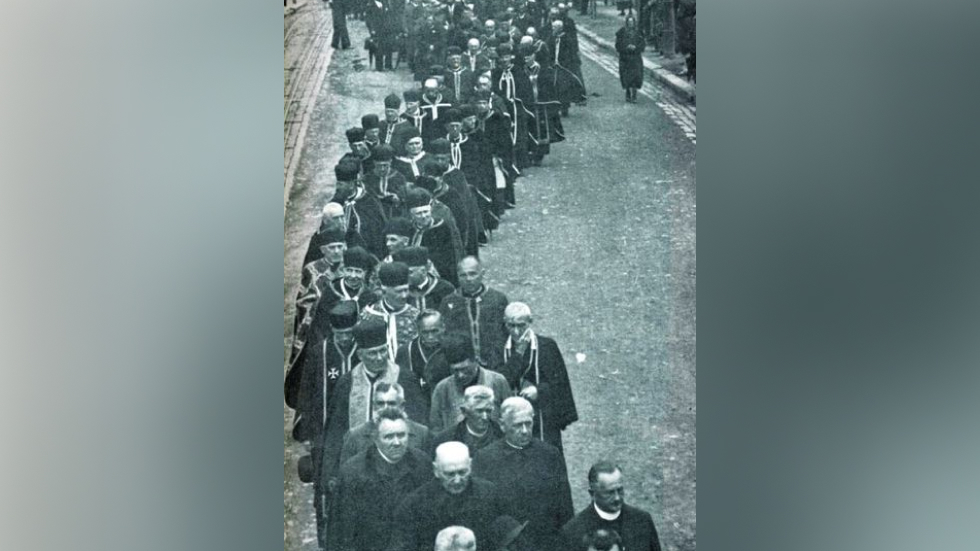
Galicia became part of the USSR in 1939. Even before Soviet times, there was an unspoken ban on the topic Thalerhof, because the very fact of Russian existence in Galicia was seen as an impediment to Ukrainization, which was actively cultivated in Western Ukraine following World War Two. After Galicia and Volhynia became part of the USSR, most Russophile organizations in Lviv were closed. However, memorial services by the monuments continued. As the eyewitnesses and contemporaries of the events grew older and died, a new generation of Galicians was brought up in the spirit of atheism and took on a Ukrainian national identity. As a result, fewer and fewer people came to the memorials.
In modern Ukraine, the Rusyn genocide isn’t publicly discussed. Thalerhof is not mentioned in any school textbooks on the history of the country. The idea that Russians once lived in Galicia – the proud center of “Ukrainian culture” – does not fit the nationalistic ideology of contemporary Ukraine. Most young people have never even heard of Thalerhof.
The tragedy marked the end of the Russophile movement in Galicia. All those who did not submit and did not take on a Ukrainian identity were physically annihilated. Just a few years after the tragic events, public views changed. The region came under the influence of other movements and politicians. When Austria-Hungary fell apart after the First World War, Galicia turned into a powerful center of the Ukrainian nationalist movement.
